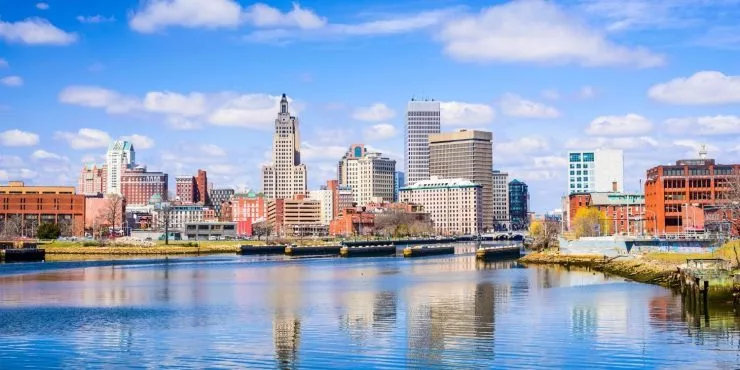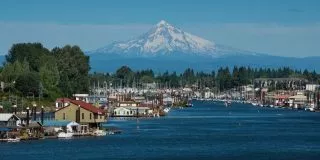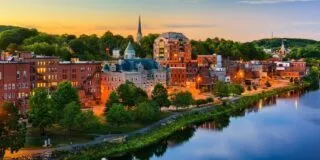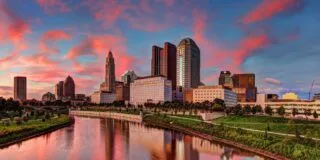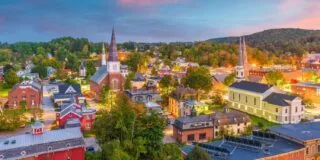Officially nicknamed the “Ocean State” but also known as “Little Rhody,” the “Plantation State,” the “Smallest State,” the “Land of Roger Williams,” and the “Southern Gateway of New England,” Rhode Island was the 13th state to join the United States of America on May 29, 1790.
It has a population of 1,059361 people (as of 2019), making it the 44th most populous state.
Rhode Island is bordered by the states of New York, Massachusetts, and Connecticut.
It is the smallest of all US states, consisting of 1,214 square miles (3,144 square kilometers) of land and water.
The capital of Rhode Island is Providence, located northeast of the state on the US mainland.
That’s enough fast facts about the Ocean State; let’s dive deep into more facts!
People have lived in Rhode Island for at least 11,000 years!
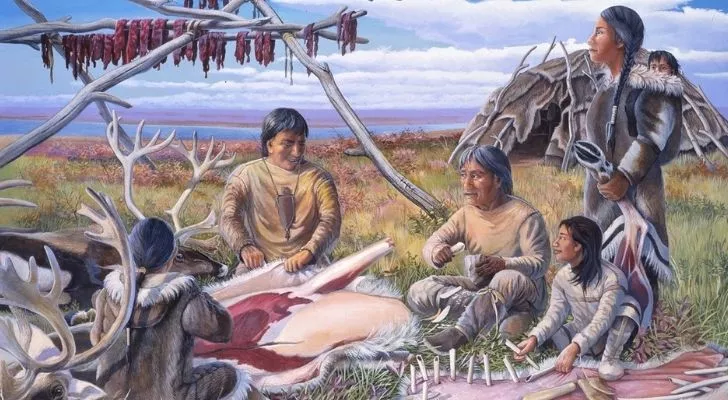
The most commonly held theory on how people first came to live in the Americas claims that it was settled sometime between 13-15,000 years ago by people we refer to as Paleo-Indians.
These Paleo-Indians crossed over from the far east of modern-day Russia into Alaska via the Bering Strait, a land bridge at the time.
As per this theory, North America was slowly populated as these early explorers branched out while searching for better hunting grounds.
The earliest evidence of human presence in Rhode Island’s modern state goes back to around 12,000 years ago.
Archaeological evidence shows that by around 4000 BC, the area’s population had grown considerably across the modern state.
The first European to visit Rhode Island was from Florence.

In 1524, the famed Florentine explorer Giovanni de Verrazzano was sailing along the east coast of North America in search of an easy water passage through to the Pacific Ocean on the other side of the continent.
During his journey, he passed by modern-day Rhode Island and wrote detailed reports on the people who lived there and the landscape.
He wrote of an island in the Mediterranean Sea similar to Rhode Island.
As a side note, Verrazzano is referred to as a Florentine, not an Italian, as Florence wasn’t a part of Italy until much, much later!
There were at least five different tribes living in parts of Rhode Island when Europeans first arrived.
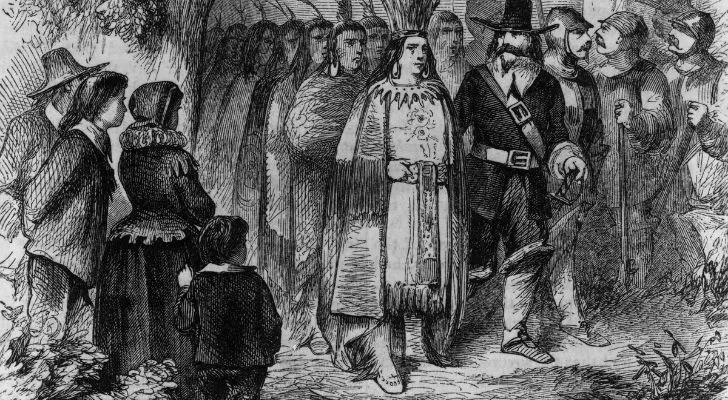
The five tribes that lived within the boundaries of modern-day Rhode Island when Europeans first came into the region include the Wampanoags, Narragansetts, Niantics, Nipmucs, and Pequots.
All five tribes spoke different variants of the Algonquian language.
The Narragansetts ruled over most of the present state of Rhode Island, while others, such as the Pequots, lived partly within the confines of the area and other neighboring modern states.
The first European colony in Rhode Island was founded on the principle of religious liberty.
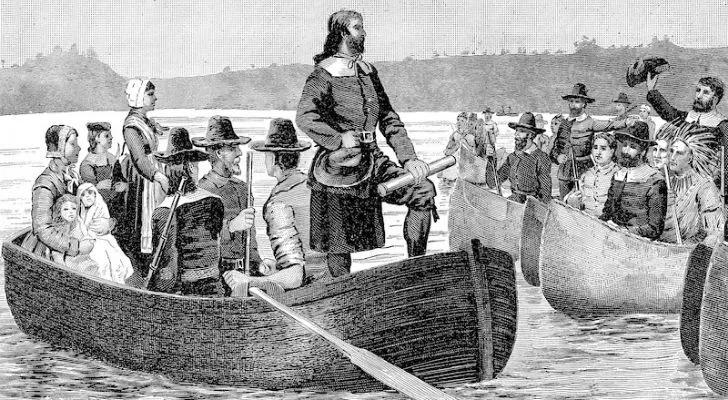
The first European settlement within modern-day Rhode Island was Providence Plantations, which Roger Williams established in 1636.
Roger Williams was a Puritan minister and author who believed in freedom of religion and the separation of church and state.
His controversial opinions led to his expulsion from the Massachusetts Bay Colony, after which he fled to modern-day Rhode Island.
Afterward, Roger Williams purchased land from the Narragansett people and founded the first European settlement at the site of modern-day Rhode Islands’ capital city, Providence.
Rhode Island was the first of the colonies to declare independence from Great Britain.

On May 4, 1776, the Rhode Island Colony declared they had had enough of British Rule.
The colony had risen to great power by this point, with its two major ports of Newport and Providence bringing considerable wealth.
The reasons for Rhode Island’s rejection of British rule were in line with the other colonies; they were fed up with unfair opportunistic taxation.
Rhode Island had much more to lose from the new taxes, especially the sugar taxes, than the other states, so they declared their independence two months before the other colonies.
But Rhode Island was cautious about jumping out of the frying pan and into the fire.
They deliberated for a long time before becoming the last of the 13 colonies to ratify the US constitution in 1790.
Rhode Island is not actually an island.
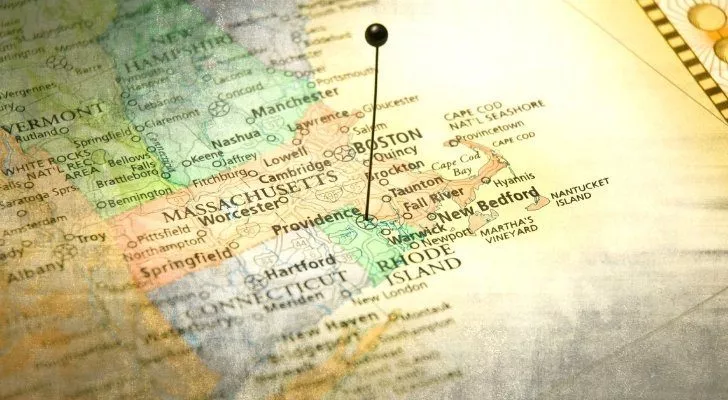
Before we go any further, we need to clarify something.
Many people would be pretty amazed to learn that the state of Rhode Island is, in fact, not just an island.
When we call the state Rhode Island, we’re shortening the state’s official name.
The full name is the State of Rhode Island and Providence Plantations, which was called the Colony of Rhode Island and Providence Plantations before the American Revolution.
This also happens to be the longest official US state name.
Rhode Island, as in the island itself, is possibly the same island that the Florentine explorer Giovanni de Verrazzano described in his travels in the region in the 16th century.
The island, officially also called Rhode Island, is commonly referred to as Aquidneck Island.
The first of the Thirteen Colonies to ban slavery was Rhode Island.
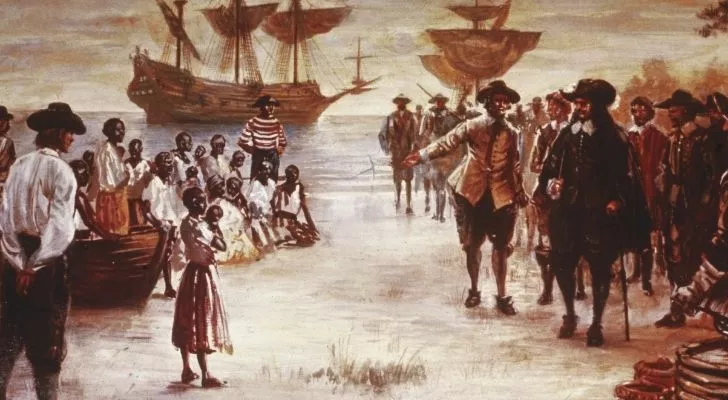
Back in 1652, Rhode Island attempted to ban slavery.
Unfortunately, the laws weren’t enforced until much later, as there were still nearly twice as many enslaved people in Rhode Island than in any other New England colony in 1774.
This is because slavery was a significant commercial interest for traders based in Rhode Island, even after the American Revolution.
These traders would exchange rum for enslaved people, then trade them for molasses, which in turn was used to make more rum.
While they rarely brought enslaved people into the state, they relied almost exclusively on the slave trade.
It wasn’t until the 1840s that slavery within the state, including its involvement in the slave trade, was halted.
One of the world’s greatest horror and mystery writers was from Rhode Island.
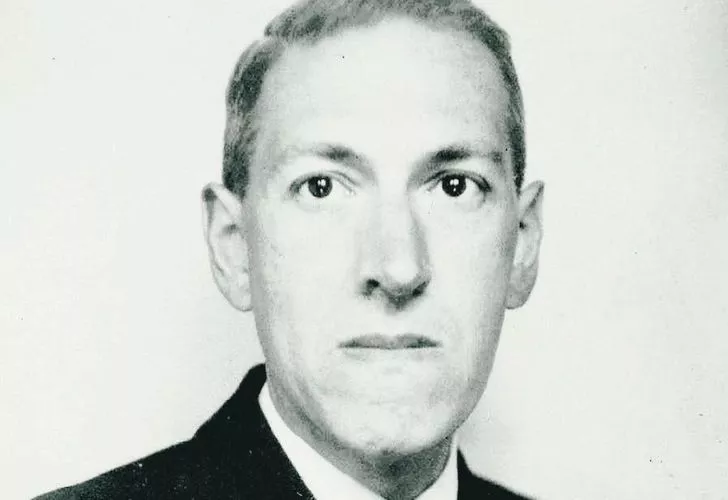
Howard Phillips Lovecraft, commonly known as H. P. Lovecraft, is best known today for his fantastic otherworldly short stories.
Born in Providence in 1890, Lovecraft only got into writing in his 20s.
He was never really recognized for his works during his life, though. Instead, his short stories were published in cheap fiction magazines.
Lovecraft died at the young age of 46 from cancer, utterly impoverished due to the lackluster reception of his works.
Like many great creative people, he wasn’t truly appreciated until after his death.
As a lifelong fan of Edgar Allen Poe, Lovecraft would be ecstatic that his works are praised similarly to Poe’s today.
Rhode Island is the second most densely populated state in the US.
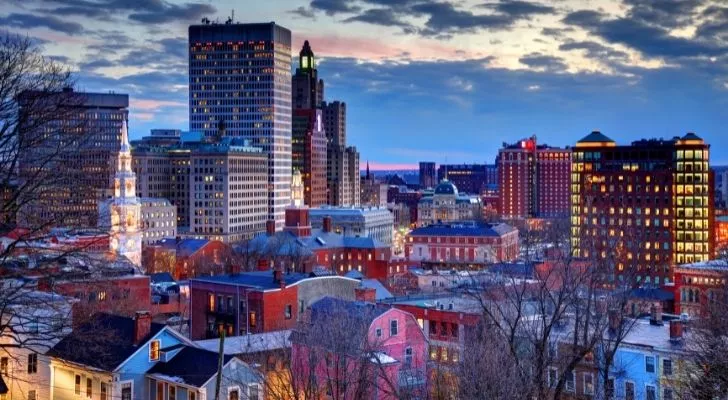
While this may initially come as a surprise, it just makes sense if you look at the numbers.
The state is just 37 miles (60 km) wide and 48 miles (77 km) long, but its population is a booming 1,059,361.
That gives the state a population density of 1,006 people per square mile (388 people per square kilometer).
The only state with a higher population density is New Jersey.
The hit animated TV series Family Guy is set in Rhode Island.

The show was initially thought up by its creator, Seth MacFarlane, while he was studying at the Rhode Island School of Design in 1995.
MacFarlane has borrowed many famous landmarks and icons to give the show an authentic Rhode Island feel.
While Family Guy is set in the fictional city of Quahog, it was revealed by MacFarlane that it’s actually modeled on the city of Cranston, Rhode Island.
A Rhode Island Civil War veteran popularized sideburns.

Ambrose Burnside was, overall, a rather underwhelming man.
Sure, he was a Civil War general, but he was also credited with several major Union defeats, mainly due to his resounding incompetence.
Despite this, he was somehow elected as the governor of Rhode Island in 1866 before becoming a senator for the state three years later.
That’s not why we remember Ambrose Burnside, though. Really, we remember him for his crazy facial hair.
Burnside would keep his chin cleanly shaved while letting his beard hair connect to his mustache, a look which soon became known as the “Burnside.”
Not long after this, growing hair down the sides of one’s face became quite popular while shaving the beard and mustache, a style known as sideburns.
It was named as such because it was similar to the Burnside, but just on the side of the face.
Rhode Island is home to the oldest topiary garden in the US.

The Green Animals Topiary Garden may not have the most original or awe-inspiring name, but that’s entirely forgivable, considering how old it is.
Located in Portsmouth, Rhode Island, the garden lies within a 7-acre (28,000 square meters) estate.
The history of the garden goes back to 1872 when the estate was purchased to be used as a summer retreat, although the first topiaries were grown much later in 1912.
These days the garden contains some 80 different trees, which have been sculptured into various forms, including a unicorn, a giraffe, teddy bears, and an elephant.
There are nearly 400 miles of shoreline in Rhode Island.
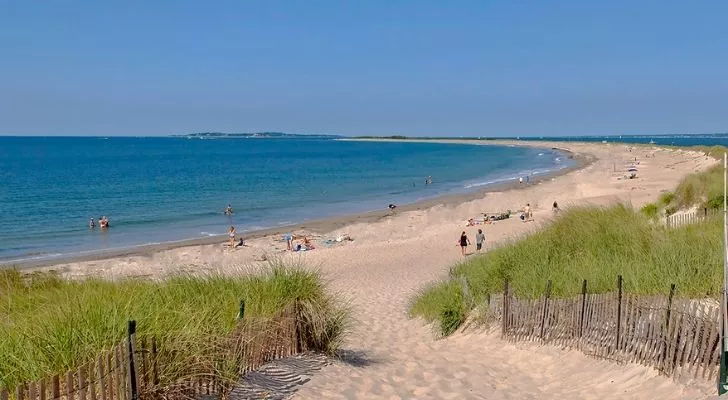
In terms of size, Rhode Island really is on the smaller side of things.
With such a small territory, the fact that the state has so much shoreline makes it seem unbelievable, but it’s true!
It has so many shorelines because this number includes the shores of all the islands in Narragansett Bay and the coast of the bay itself.
In addition to all the shorelines, Rhode Island also has more than 100 fantastic beaches!
Rhode Island is a very religious state.

It should come as no real surprise because the state was founded on the principle of religious freedom.
According to a survey by the Pew Research Center in 2014, 75% of Rhode Islanders are Christian, whether they actually practice their religion or not.
42% of Rhode Island’s Christians are Catholic, 14% are Evangelical Protestants, and 14% are mainline Protestants.
Just 20% of the state’s population defines themselves as non-religious.
Rhode Island has some fascinatingly wacky laws.

It’s pretty likely that there isn’t a single US state which doesn’t have at least a couple of bizarre, antiquated laws, and Rhode Island is certainly no exception.
Some of these laws, while somewhat strange, make perfect sense.
One such example is a law that states that biting off another person’s leg is illegal.
There’s also one which decrees the throwing of pickle juice onto a tram, an offense that sounds like it’s got a great backstory!
The city of Providence has a few funny laws that make it illegal to wear see-through clothing or sell a toothbrush and toothpaste to the same person on a Sunday.
What Rhode Island lacks in size certainly makes up in character.
This tiny state is so small that you could drive in one side and out the other before you even realize you were in it.
That doesn’t mean that there’s nothing to do there, though.
In fact, Rhode Island is so full of things to do that it’s the second-most densely populated state in the US!
If that doesn’t convince you of how great the state is, you might consider checking out one of its 100 or so beaches or taking a tour of all the sights referenced by Family Guy.
